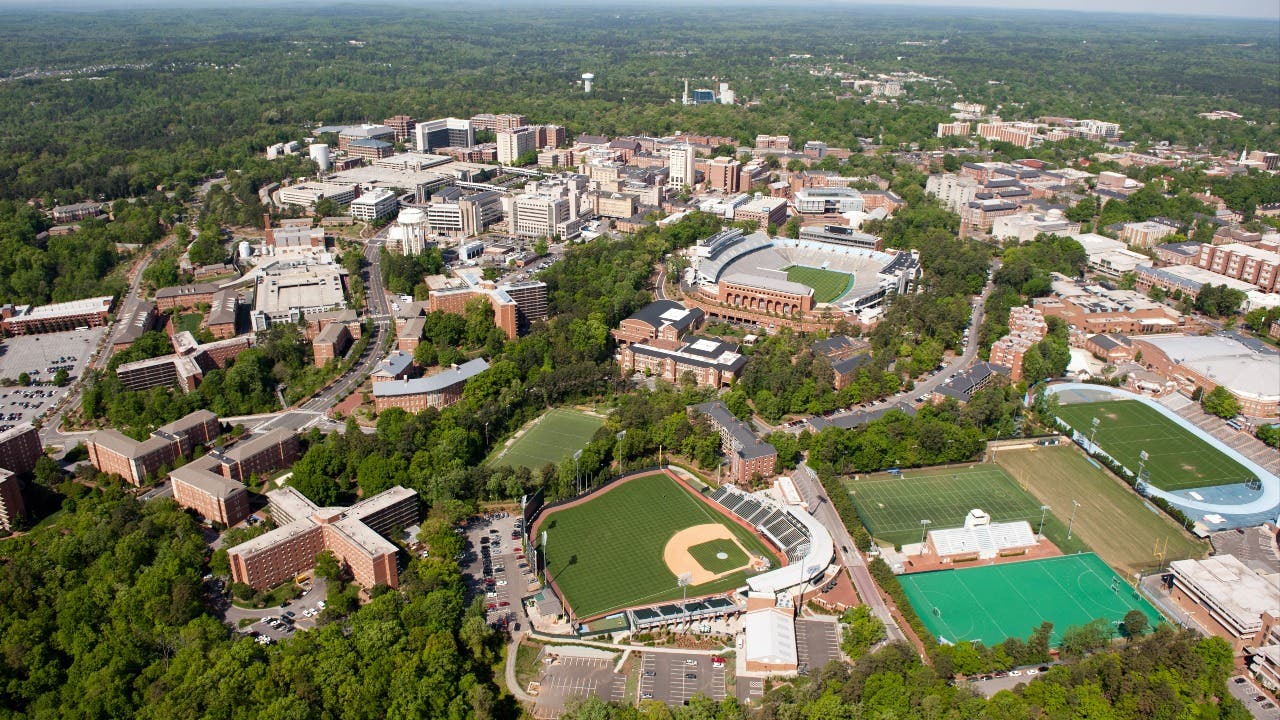Why is college so expensive?

The Bankrate promise
At Bankrate we strive to help you make smarter financial decisions. While we adhere to strict , this post may contain references to products from our partners. Here's an explanation for .
Key insights
- Increased demand for a college education, less funding from state governments and increases in administrative and operating costs have contributed to a higher cost.
- Students can afford college by seeking funding sources such as scholarships, student loans and work-study to help foot the bill.
- Earning a college degree is still worth it for many, giving graduates a higher earning potential and more skills and experience in their fields.
Over the last 20 years alone, the cost of education at public 4-year institutions has increased by a staggering 179.2% for the average student.
With the average cost of an undergraduate degree ranging from $25,707 to over $218,000 depending on a student’s resident status and institution, it’s natural to wonder why college is so expensive. From increased demand for higher education to waning government funding, many factors contribute to the high-and-rising costs of attending a college or university in the United States.
Reasons why college tuition is rising
Students applying for college — and their parents — may be met with sticker shock when they see the total cost of attendance for school. Even for in-state students, College Board estimates the annual undergraduate budget to be around $24,000. That number rises to more than $42,000 for out-of-state students. There are three main reasons for this: growing demand, a shortage of in-state funding and outsized investment in student services.
1. Increased demand bumps up rates
A college education has become a rite of passage for many students in America, and studies continue to show that college graduates are more likely to become higher earners than those without a degree. In 2022, those with a bachelor’s degree earned a weekly salary that was 68 percent higher than those with a high school diploma and had an unemployment rate that was 45 percent lower.
This social and financial pressure increases the public demand for these institutions, and growing demand allows colleges to charge more for their services. Many colleges have also invested in better amenities to attract incoming students, which translates to higher student fees.
2. Colleges are receiving less money from state governments
In 2021, many state legislatures continued to make cuts to state funding for higher education. While some states have appropriated more funds for higher ed in subsequent academic years, others continued to cut higher education support– and then, of course, there is inflation to consider.
Though many colleges received federal funding during the pandemic and available financial aid for students continues to increase, neither of these factors solve the systemic issue of reduced state funding — one of the primary contributors to elevated tuition costs.
3. Institutions are investing heavily in student services
While amenities and accommodations are big players in the increasing institutional costs, rising administrative costs are also to blame.
A 2021 study found that colleges spend more on administrative services than before. Between 2010 and 2018, spending on student services and administration grew by 29 percent and 19 percent, respectively, while spending on instructional staff grew by only 17 percent — despite no concrete benefits of that increased budget.
“Institutional spending continues to rise while contributing little to graduation rates,” the report reads. “Increases in per-student spending on instruction, administration, and student services were each correlated with an increase in tuition for the next academic year, even after controlling for levels of appropriations and institutional characteristics.”
4. Operating costs continue to go up
Like any other industry, the general cost of operating is going up. Inflation has slowed down from the higher rates in 2021 and 2022. However, prices still continue to rise. The inflation rate from February 2023 to February 2024 was 3.2 percent.
This means the cost of living is going up. Colleges hire many highly-educated professors who require high salaries and likely want to see pay go up as the cost of living increases. This alone can mean colleges need to charge more for admission, but there are other increased operating costs, as well.
How students can afford college
Despite the growing costs, there are still ways for students to afford a degree — and sometimes even go to college for free.
Prospective students should, first and foremost, fill out the Free Application for Federal Student Aid (FAFSA). Even if you don’t think you’ll qualify for federal aid, you may be surprised at what’s open to you. It costs nothing to fill out the FAFSA, and it’s the only way to see what federal grants, loans and work-study opportunities are available. Plus, some financing opportunities require the FAFSA even if you don’t qualify for funding directly through the government.
Some common ways students pay for college are:
- Scholarships. Many colleges, businesses and community organizations offer money toward college for qualifying applicants. Scholarships are given based on academic, artistic or athletic merit. Typically, you have to apply for scholarships and you may need to fit certain criteria to apply.
- Grants. This is another way you can get free money towards your education but is usually based on need rather than merit. Grants may be available through the federal government, state government or colleges and often require an application.
- Student loans. Getting a loan for your education can help you put off paying for college, but you will have to pay back whatever you borrow plus interest. There are both public student loans and private student loans available.
- Employer tuition assistance. Some employers offer employee programs where they pay for or reimburse tuition for certain courses or degrees of study.
- Work-study. Students can sometimes qualify for this type of part-time work while in college. Work-study jobs are usually available through the college or university where you study.
Many students use a combination of some or all of these options to chip away at educational expenses. With the right blend of financial aid, it’s possible to bring down the high costs of college to a more reasonable level.
Is college worth it?
Despite the rising costs, there are multiple benefits of attending college, among them being potential earning increases, broader career opportunities and increased job security.
Some of the biggest benefits of a college education include:
- Better pay: Full-time employees who have earned a bachelor’s degree make an average of $579 more per week than those with a high school diploma — or $30,108 per year.
- Career opportunities: Attending college gives you the skills necessary to succeed in various careers and fields of study. Employers also highly value a college degree. Eighty-seven percent of employers said in an Association of American Colleges and Universities (AACU) survey that earning a degree is definitely or probably worth it.
- Experience: The act of simply completing a degree can prepare students for what a professional career could look like. Plus, many degree programs require students to get a summer internship in their field of study to graduate. This provides invaluable on-the-job experience and opens the door to future employment opportunities.
- Skills: College students have a unique opportunity to gain skills unrelated to their major or field of study. Most schools offer clubs and organizations that focus on valuable career-building skills. For instance, students who want to develop public speaking skills may join an organization like Toastmasters. College also fosters soft skills like time management and organization.
The bottom line
Ultimately, persistent inflation, rising administrative costs and reduced state funding for higher education keep college costs high– and they continue rising. While blaming inflation alone for expensive college education is tempting, it is important to remember that the ballooning costs of tuition and fees far outpace inflation alone. Overhead expenses, an ever-increasing demand, and competitive campus amenities also drive costs up.
For students looking to pursue a college education, there are many options for funding, including college savings plans, student loans, and work-study programs. Student loan forgiveness programs can help graduates to recoup some costs, depending on their field of study and career plans.


